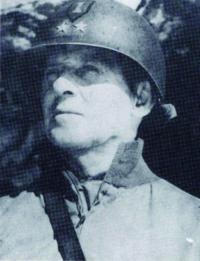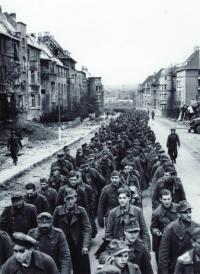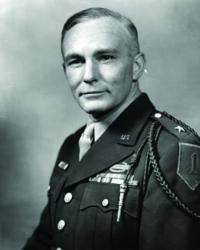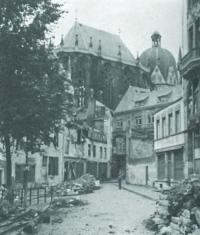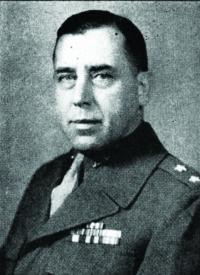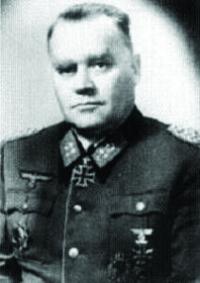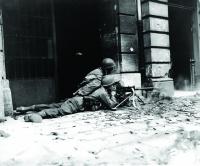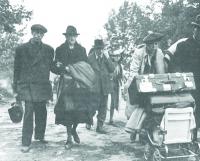THIS WEEK, 70 years ago, American soldiers of the following divisions were engaged in capturing the 1,900 year old city of Aachen: 1st Infantry; Second Armored; Third Armored; 9th Infantry; 28th Infantry; 29th Infantry Division; 30th Infantry.
Aachen is the western most German city, located 38 miles southwest of Cologne, along the borders of Belgium and the Netherlands. During the reign of the Emperor, Charlemagne, in the Eighth Century, the city had served as his capital, and continued to be the site of the coronation of his successors for the next 600 years. Upon the death of Charlemagne, he was buried in the Aachen Cathedral, which would see the coronation of 30 German kings and 12 queens. Today Aachen has a population of 240,000.
Seventy years ago, the city had been incorporated into the Siegfried Line, Germany’s defensive system on its western border. At the time, its population numbered about 165,000. Now the Germans were fighting on their home soil. As one German officer commented, “Suddenly we were no longer the Nazis, we were German soldiers.”
By mid-September, the American 1st Infantry Division - “The Big Red One” - commanded by Clarence R. Huebner, had formed a semicircle around the German city. Further advance was limited because supplies were being diverted to Operation Market-Garden. At that time, the city was defended by the 116th Panzer Division, commanded by Gerhardt Wilck. The lull in the fighting allowed the Wehrmacht to reinforce the Aachen defenses. The LXXXI Corps, commanded by Friedrick Köchling, began arriving in October. It included the following divisions: 183rd Volksgrenadier and 49th Infantry, both commanded by Wolfgang Lange; 12th Infantry, commanded by Gerhardt Engel; 246th Volksgrenadier Division, commanded by Gerhardt Wilck, who took over command after remnants of the 116th Panzer Division were removed from the city. On October 7, units of the elite SS Liebstandarte Adolph Hitler, commanded by Wilhelm Mohnke, began arriving.
By October 1, “The Big Red One” had been joined by the 30th Infantry Division, commanded by Leland S. Hobbs. Because it was comprised of National Guardsmen from North Carolina, South Carolina and Tennessee, it was known as “The Old Hickory” Division.
The next day, the Ninth Air Force opened an aerial bombardment with 450 aircraft. Unfortunately, this bombardment failed to register a single direct hit on any German pillbox. After the Air Force had finished, 372 guns began shelling the German positions. Also, that day, “Old Hickory,” began its advance, subduing approximately 50 German pillboxes on its first day. By the end of the second day, “Old Hickory” had lost 300 soldiers. By October 4, total casualties for the Americans were 1,800. The Germans knew they could not hold, so reinforcements were rushed in, which included the 3rd Panzergrenadier Division, commanded by Walter Denkert and the reconstituted 116th Panzer Division, commanded by Siegfried von Waldenburg. By now “The Big Red One,” had begun its offensive and within two days had captured the highest ground around the city.
On October 16, the 30th and 1st Infantry Divisions linked up - six days late - and the city of Aachen was surrounded. The cost to the Americans was 400 dead and 2,000 wounded, with most coming from the 30th Infantry Division. The Germans had suffered 5,700 casualties and the garrison was reduced to 4,392 combat effectives.
That day, First Lts. Cedric A. Lafley and William Boehme and PFC Ken Kading, under a flag of truce, delivered a message from General Heubner to the garrison’s Commander, Col. Leyherr, of the 246th Volksgrenadier Division. The message read that, “The city of Aachen is now completely surrounded by American forces. If the city is not promptly and completely surrendered unconditionally, the American Army ground and air forces will proceed ruthlessly with air and artillery bombardment to reduce it to submission.” When the Germans refused, the next day, four groups of the 9th Tactical Air Command’s, P-38s and P-47s dropped 62 tons of bombs on the city. American artillery dumped 169 tons of shells on the city - with little effect. The following day, 99 more tons of bombs and another 5,000 rounds of artillery were dropped on the city.
On October 18, the Hotel Quellenhof, which was acting as the city’s defense headquarters, was assaulted. However, an SS Battalion was able to throw back the assault and even capture several Americans. So the Americans brought up the heavy artillery, literally, and began to pound the hotel with 155 mm guns.
In the meantime, relief attempts were mounted by General Denkert’s 3rd Panzergrenadier and General von Waldenburg’s reconstituted 116th Panzer Divisions, while Field Marshal Gerd von Rundsted, recently reinstalled as Commander-in-Chief, West, reminded, “ . . . the commander of the 246th Volksgrenadier Division - [Gerhardt Wilck] - once more, and with the utmost emphasis, that he will hold this venerable German city to the last man, and will, if necessary, allow himself to be buried under its ruins.”
With the relief attempts failing, Wilck, on the afternoon of October 9, instructed that,
“The defenders of Aachen will prepare for the last battle. Constricted to the smallest possible space, we shall fight to the last man, the last shell, the last bullet, in accordance with the Führer’s orders. In the face of the contemptible, despicable treason committed by certain individuals, I expect each and every defender of the venerable city of Aachen to do his duty to the end, in fulfillment of our oath to the flag. I expect courage and determination and to hold out.
Long live the Führer and our beloved Fatherland!”
On October 21, Wilck sent out two American prisoners - Staff Sgt. Ewart M. Padgett and PFC James B. Haswell - under a flag of truce, with two German officers in tow. Brigadier General George A. Taylor, assistant commander of “The Big Red One,” accepted the German surrender at 12:05 p.m. on October 21. The ancient capital of Charlemagne’s empire - the First Reich - was now in American hands.
Capturing the city had cost the Americans 5,000 casualties. The Germans lost an equal amount, plus 5,600 taken prisoner. Most of the American casualties were suffered by the “Old Hickory” Division - 3,000 - while “The Big Red One” had at least 1,350. Both the “Old Hickory” and the “Big Red One” received Distinguished Unit Citations for the Battle of Aachen.
NEXT WEEK: WARSAW
Mr. Wimbrow writes from Ocean City, Maryland, where he practices law representing those persons accused of criminal and traffic offenses, and those persons who have suffered a personal injury through no fault of their own. Mr. Wimbrow can be contacted at
wimbrowlaw@gmail.com
